Cyberbullying Statistics & Facts for 2025
With the ease of internet access, and the ability to hide behind a computer screen, cyberbullying has given bullies a new platform to harass their victims. Read these shocking cyberbullying statistics and facts to better understand the online harassment internet users face.
Cyberbullying is a significant problem for internet users of all ages, but especially for teens. According to the latest cyberbullying statistics, over the last 10 years cyberbullying has rapidly grown, particularly among school-aged young people.
The most dangerous aspect of cyberbullying is that it often goes unnoticed. Often, cyberbullying overwhelms the victim with anxiety and a lack of clarity on how to deal with it or where to seek support and assistance. This makes it harder for teachers or parents to detect the abuse.
Whether the messages are intended for public viewing or not, many victims of cyberbullying live in constant fear that someone will see or leak that they’ve been bullied online and the related messages, which increases anxiety and depression levels significantly.
As you can see, cyberbullying is a major problem worldwide. This article breaks down the global cyberbullying statistics and provides the facts you need to know about cyberbullying.

-
04/03/2025 Facts checked
We refreshed the statistics by adding recent data related to cyberbullying.
Cyberbullying Statistics: An Introduction
We’ll start with the basics now and see what defines “cyberbullying” and how it stands out from other forms of bullying. Then we will dive into the important statistics on cyberbullying you should know.
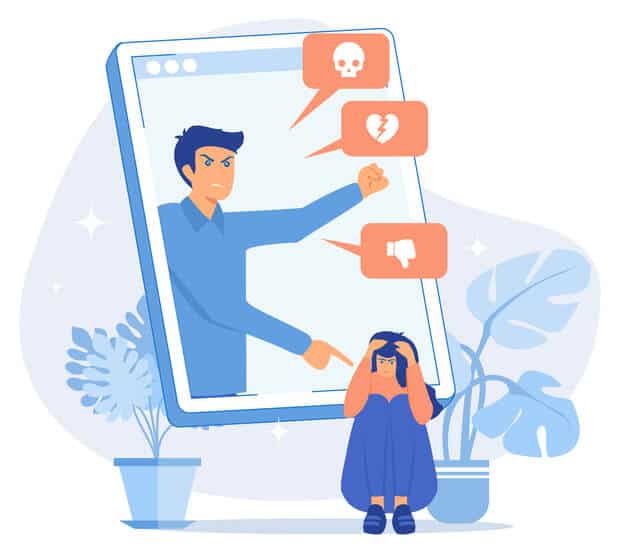
Cyberbullying Definition
Cyberbullying is a term used to describe the use of digital technology to harass, threaten, embarrass or target another individual. This can include mean text messages or emails, inappropriate information posted on social networking sites, or embarrassing pictures or videos shared without the subject’s knowledge or consent.
Cyberbullying is different from traditional bullying because it can happen 24 hours a day, seven days a week. Cyberbullying can follow the victim wherever they go on the internet. While most cases of cyberbullying are directed at children and teens, adults are not immune to this form of internet harassment.
Basic Statistics: What Is Cyberbullying?
Cyberbullying — also called “cyber bullying” — is when someone uses technology to bully or harass another person. Cyberbullying can take many forms, including text messages, email, social media and shared files on the Internet. Some people think it’s not as bad as bullying that happens in person, but as you’ll see in the statistics provided below, that’s not the case.
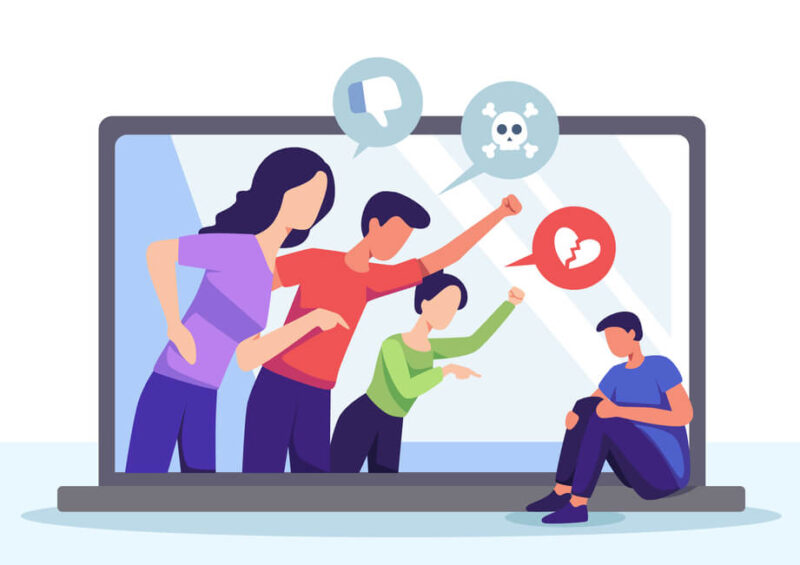
1. Cyberbullying in Teens
Teenagers are spending more time growing up online than they are in the real world. While the digital world can be a great place to communicate, share, create and play, this new frontier brings with it a new set of problems. Children and teens being bullied online may question their self-worth because of the constant negative comments directed toward them.
Statistics show that cyberbullying affects almost 41% of U.S. adults and is most prevalent among teenagers.2 Nearly half of American teenagers ages 13 to 17 (46%) experienced at least one of the six types of cyberbullying from 2020 to 2021. The same survey found that being called names online or through social media is the most common form of cyberbullying.3
What’s more, data from 2023 revealed that 16% of high school students reported being “electronically bullied.” 23
31.2% is the average lifetime victimization rate for cyberbullying, says the Cyberbullying Research Center. This average is based on cyberbullying prevalence data from 2007 to 2023.24
In Europe, a 2024 World Health Organization study focused on 44 countries and regions found that 15% of teenagers have been cyberbullied.25
2. What Are Some Types of Cyberbullying?
According to research by Pew, most Cyberbullying falls into two categories — offensive name-calling and spreading of false rumors.
While cyberbullying is similar to traditional bullying, it presents unique challenges and dangers. Cyberbullying can be done anonymously — the most common type — which means the bully can’t be held accountable for his or her actions. It’s also very easy to spread rumors or lies online, which makes it difficult to prove that it’s happening.
Researchers have classified the most common types of cyberbullying experienced online into six main categories, as listed below:
- Offensive name-calling: about 32% of U.S. teens face this type of bullying.
- Spreading of false rumors: 22% of teens report to have been victim to this online harassment.
- Receiving unsolicited explicit pictures: 17% of U.S. teens have faced this.
- Constantly asking for their whereabouts and if they’re with someone: 15% of teens have faced this type of harassment.
- Physical threats: 10% of teens report having received physical threats as well.
- Sharing of personal and explicit information or images without consent: 7% of the U.S. teen population has fallen victim to this type of bullying.
In a study conducted in April and May of 2022, around 28% of teens have mentioned that they’ve encountered multiple types of cyberbullying, including more than one of them included above.3
Cyberbullying on Social Media
Cyberbullying, in all its forms, is a persistent and often uncomfortable reality of social media. The ease of hiding behind a username or avatar makes it difficult to know who you’re talking to, and this anonymity can be a breeding ground for hurtful comments.

3. What Social Media Is the Biggest Source of Cyberbullying?
Among social media companies, Facebook was the biggest source of cyberbullying for 75% of online harassment victims in the United States in 2021. Facebook was followed by Twitter and Instagram, where 24% of responding victims reported having experienced discriminatory harassment.2
Social media has the highest rate of cyberbullying because most people use their real names and pictures, which can lead to them being easily identifiable. It also gives bullies a sense of anonymity, as they feel they will not be held accountable for their actions because they are behind a computer screen.
The same study showed that children are also likely to experience cyberbullying on other social media apps like Snapchat (15%) and TikTok (9%).
4. How Is Online Harassment Divided by Gender?
According to a study by the Cyberbullying Research Center in 2021, girls are 23.7% more likely to be harassed, and transgender teens are 35.4% more likely to be harassed online. It’s no secret that social media has become a breeding ground for cyberbullying. In reality, many women and transgender people have been the main victims of online bullying.1
A study conducted between December 2021 and February 2022 found that of 8,720 pieces of content sent to high-profile women, 6.5% contained misogyny, image-based sexual abuse, hatred or graphic content.4
Overall, the study participants were most likely to receive abuse via video content, with over 17% of the direct messages examined containing violating content in this format. Additionally, 14.1% of violating content was sent in audio form.4
More recent data from 2023 focuses on high school students specifically. The report highlights how 21% of U.S. female high school students were electronically bullied. Male students made up 12%. The same report details how 25% of LGBTQ+ high school students have been cyberbullied.23
That said, a Europe WHO study from 2024 shows that boys are more likely to report cyberbullying than girls.25
Effects of Cyberbullying
Cyberbullying on kids can have drastic effects, which can cause sleep problems, self-esteem issues and trouble concentrating in school. It also can cause eating disorders and self-harm behaviors, such as cutting and suicide attempts in extreme cases.
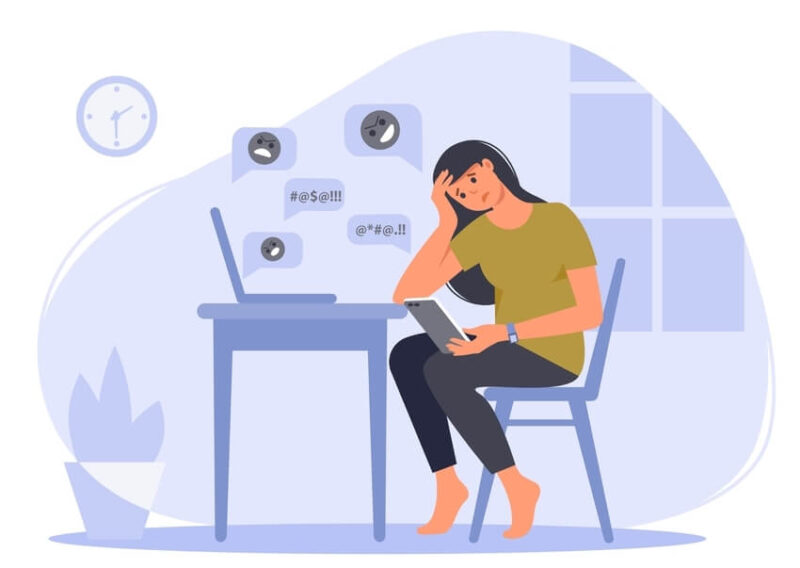
5. What Are the Social Effects of Cyberbullying?
In a study conducted by a Malaysian university, the majority of the first-year participants (85%) interviewed mentioned that cyberbullying affected their academic performance and grades. They also agreed that cyberbullying caused a devastating impact on students’ emotions and thus led to unimaginable psychological problems among the victims.22
One study from 2021 shows that cyberbullying has had a detrimental effect on how two-thirds of teen victims feel about themselves. After experiencing regular cyberbullying, more than half of the youth felt angry, over a third felt hurt and about 13% were scared.19
6. Cyberbullying Can Have Serious Consequences
Cyberbullying among young adolescents was associated with a higher likelihood of suicidal thinking or behavior. In a study by the National Institutes of Health, more than 10,000 participants ages 11 to 15 years were surveyed about their experiences with cyberbullying, mental health issues, and suicidal thoughts or behaviors.
The survey also gathered information from the children’s parents regarding their child’s general mental health status. The survey found that those who were victims of cyberbullying were four times more likely to report suicidal thoughts or behavior than those who were not victimized by other youth online.5
Is Cyberbullying Legal?
Although awareness about internet safety and cyberbullying has increased globally over the past decade, many countries still lack federal laws to protect internet users against inappropriate online behavior like cyberbullying.
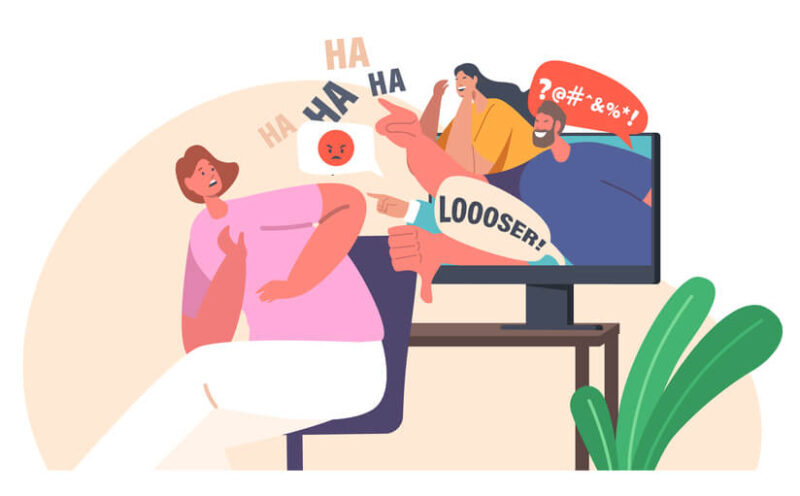
7. Cyberbullying Is Not Federally Illegal in the US
There are no federal laws against cyberbullying in the U.S. However, all states have various other laws that could offer protection. The American Federation of Teachers breaks down each state’s laws, which provides excellent cyberbullying resources, especially for school bullying. You can also read our article on the best and worst states for kids’ online security.
8. How Many States Have Passed Legislation to Criminalize Cyberbullying?
The number of U.S. states that have passed legislation to criminalize cyberbullying is growing yearly. The legislation defines cyberbullying as messaging that is “malicious or harmful” and includes repeated emails, text messages or posts on social media sites.
Electronic harassment statutes specifically cover cyberbullying in 48 U.S. states, and 44 states have criminal penalties for cyberbullying in their legislation. The National Crime Prevention Council and the law also make it easier for minors to sue their tormentors in any civil court.6
In addition, as of 2024, 49 states (including DC) and two U.S. territories have enacted specific laws that criminalize the sharing of explicit images without consent, a common form of cyberbullying.28
9. International Laws Against Cyberbullying
Internationally, some countries — such as Canada, New Zealand and Japan — have cyberbullying laws, while other countries have laws that could apply to cyberbullying, such as sexual harassment laws or cyberstalking laws. It has also been declared as a form of child abuse in many countries; therefore, there are criminal sanctions for anyone guilty of bullying others.
Unfortunately, there are no “EU-wide” cyberbullying laws, reveals a European Parliament briefing, though there are some initiatives addressing “elements of the issue.”
10. Growing Global Awareness
In terms of global cyberbullying awareness, according to a report from 2018, Sweden and Italy have the highest awareness percentage of this phenomenon, with 91% of respondents saying they were aware of cyberbullying. Saudi Arabia has the lowest percentage of awareness (37%). Meanwhile, Italy also has had the largest increase in awareness from 2011.8
Effects of COVID on Cyberbullying
The use of digital platforms by children and teenagers surged during the COVID-19 epidemic and remains high today. The COVID-19 pandemic lockdowns have caused individuals throughout the world — including children — to spend 20% more time on social media than they did before the epidemic.21
This ease of access to the internet has made it very convenient to use apps and games on cell phones, which makes them more vulnerable to cyberbullying.
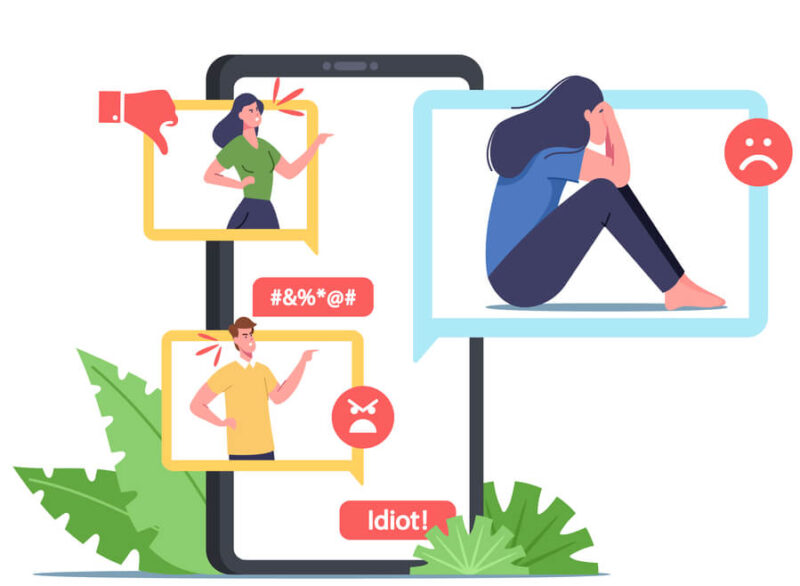
11. How Did the Pandemic Affect Our Online Presence?
A survey in Switzerland conducted in 2021 indicates that teens are using social media and other online platforms about 45% more now than before the COVID-19 pandemic lockdowns.9
According to the Pew Research Center in 2020, 71% of American parents of children ages 11 or younger are afraid that their kids may spend too much time in front of devices.26
Following on from this, a CDC study spanning 2021 to 2023, lays out how 50.4% of teenagers aged 12 to 17 were spending at least fours a day on screens during the study period. 10
12. The Pandemic Brought More People to Online Gaming and Cyberbullying
Following COVID-19, many individuals used video gaming as a source of amusement while spending extended periods of time cooped up at home. One study by Nielsen in 2020 reported that 82% of consumers worldwide played video games and watched game-related content during the lockdowns.11
This led to even more bullying, with online games including more adrenaline-spiking and violent content. Online co-op games have a “lobby” feature, where players are commonly harassed.
However, according to a study made by the Cyberbullying Research Center in 2019, the MMORPG (massively multiplayer online role-playing games) genre of gaming was the one to attract the most cyberbullying (26.8%). TPS (third-person shooter) and FPS (first-person shooter) games were close behind at 24.5% and 14.2%, respectively. Sporting video games like FIFA from EA Sports also showed up in the study, making up 11.9%.12
Further confirming the incidence of cyberbullying in online multiplayer games, in 2023, it was reported that 37% of young people (aged 10 to 17) were harassed while playing this type of game. This represents an increase of 8% from the previous year. Black adults and women were hit the hardest by harassment via gaming.29
Actions Taken by Social Media Sites
With a surge of cyberbullying cases occurring in the last decade, social media sites are employing a number of tactics to stop cyberbullying. They have created a space for people to report bullying and protocols to take action against bullies. Social media sites also use artificial intelligence (AI) to detect bullying behavior and take action against it.
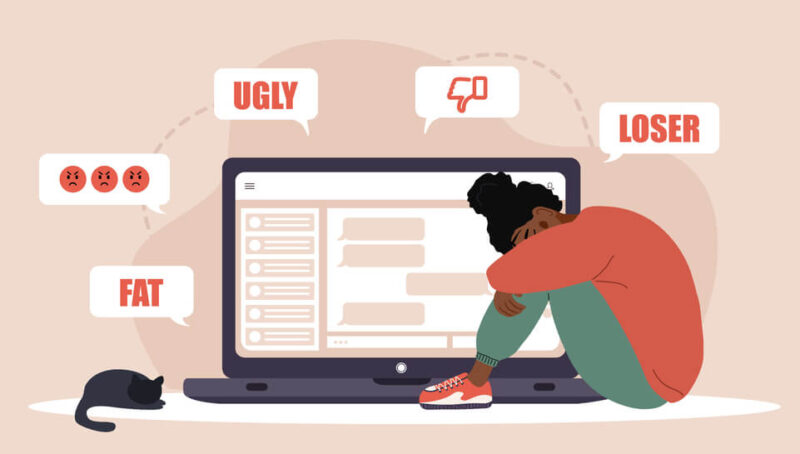
13. Facebook Stepping Up
It can be difficult for sites like Facebook and Twitter to enforce their rules consistently, especially since bullying can start offline and later move online. For this reason, while social media sites are being used as a platform to bully people, they are increasingly investing in advanced content moderation systems using AI to identify and remove cyberbullying content.
During the most recently reported period (Q3 of 2024), Facebook removed 6.4 million posts with hate content.27 The social network site defines hate speech as explicit criticism of another person based on race, ethnicity, religion, sexual orientation, gender, condition or other characteristics.13
14. YouTube Removes Harmful Content That Promotes Bullying
From October to December 2024, approximately 9.4 million videos were removed from the Google-owned YouTube video-sharing platform. This includes videos automatically flagged for violating the platform’s community guidelines.14
YouTube shared the following statistics on the types of videos that were flagged and removed:
- Child safety issues: 53.8%
- Harmful or dangerous content: 16%
- Violent or graphic content: 8.9%
- Harassment and cyberbullying: 7.6%
- Nudity or sexual: 5.4%
- Promotion of violence and violent extremism: 3.5%
- Hateful or abusive: 2.5%
- Spam, misleading and scams: 1%
- Other & misinformation: 0.7%
15. Many Teens Believe Banning Bullies Would Help
50% of teens believe permanent social media bans for users who bully or harass others would be highly effective in reducing cyberbullying, with Black teens (70%) expressing even stronger support for this measure than their White (42%) or Hispanic (59%) peers. 50% of teens also think criminal charges for cyberbullies would be an effective measure.3
How to Prevent Cyberbullying
In theory, the simplest solution to stop cyberbullying is to avoid the internet. However, given today’s prominently digital environment, this is not practical. To truly stop cyberbullying, we need to address the problem at its root — in this case, our culture’s obsession with social media and its usage limitations.

16. Teens’ Responses to Bullying
Teens themselves take their own action in response to bullying, though this can vary depending on the situation.
Responses to a study carried out by the National Crime Prevention Council 15 indicate that 36% of teens directly asked the bully to stop. Another 34% blocked communication with the bully and confided in their friends and social circles about the bullying. Meanwhile, 30% wanted to take revenge on the bully.
However, the same study shows that 29% did nothing about the bullying, choosing not to respond in any way, while 28% simply signed out of their online accounts. Only 11% talked to parents about the cyberbullying.
While it’s commendable for children and teenagers to speak up for themselves in the face of bullying, the experience can be a stressful one and some may not know how to approach it. One strategy is to limit the amount of personal information disclosed online.
Bullies are less likely to harass someone locally and online when they know little about them. This is why parents should be aware of what their children post online and ensure they’re not sharing too much personal information.
17. Responsibility of the Parents
A 2022 Ofcom survey found that around 45% of British parents trust their children to make appropriate internet material choices, rather than relying on technological limitations.
Only 5% of respondents said they had this chat with their kid just once, whereas almost half of those who responded said they did so every few weeks. This suggests that parents are not only having this important discussion with their children, but also continuing the conversation as they grow older.16
The survey also revealed that nearly half of parents had spoken to their children about the dangers of posting inappropriate material on social media. Of course, this isn’t the only way parents can prevent their children from coming across inappropriate material.
Parents could also use parental device controls or install software that filters out websites and apps that contain inappropriate content.16 Certain VPN providers, like ExpressVPN, offer parental controls and provide maximum security against prying eyes.
Some cloud-based storage providers also provide excellent privacy and online safety features, where you can store your personal photos and documents with ease.
How Can Schools Help Prevent Cyberbullying?
In addition to putting in place specific policies on dealing with cyberbullying incidents, implementing comprehensive digital citizenship education programs may help reduce cyberbullying incidents. These programs focus on teaching students proper online behavior, empathy and responsible digital communication skills.
Final Thoughts: Cyberbullying Statistics
Cyberbullying is a new concept to many people, and the statistics related to it are staggering. Just think about how much time you spend on your phone or computer daily. If you’re like most people, that’s almost all of your screen time. It makes sense that people are more likely to say hurtful things online because they can hide behind a screen and not deal with the victim’s reaction.
Online bullying has many forms and can be directed at anyone. In some cases, it is based on something completely out of the victim’s control, like their race or gender; in others, it may be fueled by aspects that are more easily changed, like weight or physical appearance.
To help prevent this type of abuse, parents should ensure their children understand the importance of not sharing personal information online or via text messages, such as where they live or go to school, their family members and how old they are.
Parents should also explain that any posts or messages about someone else can easily be manipulated by others for their own personal gain and can lead to bullying if not used responsibly.
Which statistics do you think are the most alarming? What do you think you could do to prevent online bullying? Let us know what you think in the comments below, and thank you for reading!
Sources:
- Cyberbullying Statistics 2021 | Age, Gender, Sexual Orientation, and Race
- Online Hate and Harassment
- Teens and Cyberbullying 2022
- Hidden Hate: How Instagram Fails to Act on 9 in 10 Reports of Misogyny in DMs
- Cyberbullying linked with suicidal thoughts and attempts in young adolescents
- cyberbullying.us
- Nevada Anti-Bullying Laws & Policies
- Cyberbullying – A Global Advisor Survey
- Media use before, during and after COVID-19 lockdown according to parents in a clinically referred sample in child and adolescent psychiatry: Results of an online survey in Switzerland
- CDC Daily Screen Time Among Teenagers: United States, July 2021–December 2023
- 3,2,1, Go! Video Gaming is at an All-Time High During COVID-19
- Are “Gamers” More Likely to be “Bullies”?
- Meta Transparency Community Standards
- Transparency Report Google
- National Crime Prevention Council
- Childrens-media-use-and-attitudes-report-2022
- L1ght.com: Toxicity during coronavirus
- Childhelphotline
- Cyberbullying and emotional distress in adolescents: the importance of family, peers and school
- Cyberbullying in Plain Sight, McAfee
- Weekly Time Spent in Apps Grows 20% Year Over Year as People Hunker Down at Home
- Cyberbullying and its influence on academic, social, and emotional development of undergraduate students
- CDC YRBS Data Summary & Trends Report
- Cyberbullying Research Center Summary of Our Cyberbullying Research (2007–2023)
- WHO One in Six School-Aged Children Experiences Cyberbullying, finds new WHO/Europe Study
- Pew Research Center Parenting Kids in the Age of Screens
- Statista Actioned Hate Speech Content Items Worldwide from 4th Quarter 2017 to 3rd Quarter 2024
- Cyber Civil Rights Initiative – Nonconsensual Distribution of Intimate Images
- ADL Hate Is No Game: Hate and Harassment in Online Games 2023


